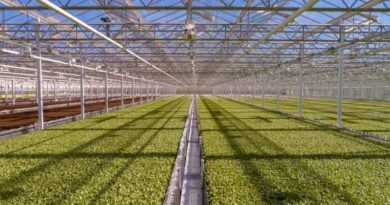Australia: GRDC kicks off regional grains updates series in Hyden
30 July 2022, Australia: Growers, advisers and grains industry professionals gathered in Hyden on July 26 as the Grains Research and Development Corporation (GRDC) kicked off its regional grains research updates series.
GRDC’s grains research updates are premier events in the grains industry calendar, bringing the latest research, development and extension (RD&E) to the Western Australian grainbelt through a series of full-day, locally tailored workshops.
GRDC Western Panel Chair Darrin Lee said that while the regional updates had been moved from their usual delivery in March as a COVID precaution, the new schedule provided an opportunity to arm growers with updated information on local research projects, and to address in-season issues such as nutrition, frost and weed and disease management.
“These sessions give growers the chance to hear from Western Australia’s leading researchers and advisers on issues that are impacting their on-farm profitability here and now, in 2022, and heading into next season,” Mr Lee said.
“GRDC’s remit is to translate the latest research outcomes into tangible, adoptable ideas and advice that growers can apply to improve their profitability. If they leave today’s updates with one or two ideas they can take away and implement on-farm this season or next, then that’s a fantastic result.”
In Hyden, hosted by local grower group the Holt Rock Group, presentations began with Ross Kingwell from the Australian Export Grains Innovation Centre (AEGIC) providing an overview of challenges and opportunities for the grains industry, including commentary on the impact of the Russia – Ukraine conflict on the global grain trade.
Mr Kingwell said that in the near term, opportunities included more canola being exported into the European Union, an increase in barley being exported into the Middle East, and more wheat exported into South Asia, as well as a potential firming up of grain prices.
“This is our time in history. Australia’s grains industry currently enjoying a rare sweet-spot: high yields and high grain prices, although the trifecta of low input costs is unfortunately missing. The recent large volumes of grain production and high grain prices have placed most WA grain farms in a secure financial position,” Mr Kingwell said.
“There are several market opportunities ahead, especially in South East Asia; aided by growing populations, growing incomes and burgeoning health concerns. However, there are local and global environmental challenges of climate risks and de-carbonisation.”
High input costs were discussed by an expert panel comprising Ben Whisson (ConsultAg), David Pannell (University of Western Australia) and Wayne Pluske (Equii). They also covered tips growers can implement on-farm to manage high input costs next season.
Department of Primary Industries and Regional Development (DPIRD) research scientist Craig Scanlan and James Easton from CSBP provided their thoughts on crop nutrition strategies for 2023 against the background of higher fertiliser costs.
Mr Easton advised growers to know what their crops need – test crops and soils; if paddocks need potassium, apply it; and to band nitrogen and potassium for best returns.
Additional presentations across the day covered frost management, weed strategies, pulse crops, winter wheats, oat varieties, managing Russian wheat aphid, optimising legume nitrogen benefits, re-engineering soils, and new technologies for weed detection and control.
Consultation sessions in the program also gave growers the opportunity to provide input into future GRDC research activities by communicating their local issues and priorities.
The grains research updates series continued in Kojonup on Thursday July 28, with additional sessions also scheduled throughout August in Dongara (August 2), Moora (August 16) and Wickepin (August 18).
Also Read: Investment of Asean and Taiwan in India’s Food Processing Sector















